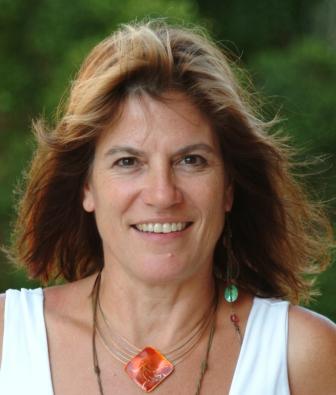Dear CAP Colleagues,
I’m just back from the annual LTER Science Council (SC) meeting in Massachusetts. The SC is the main governing body of the network, though changes in governance a couple of years ago (thankfully) delegated much of the decision-making to the smaller Executive Board, so that these annual meetings are meant to focus on science. The PI of each site plus one additional person per site (depending upon the topic of the meeting) attends. Marcia Nation was the second CAP representative, working on the LTER Communications Plan.
Each year a different LTER site hosts the SC. This year’s host site, the Plum Island Ecosystem (PIE), put on an interesting field trip showing us their work in the marshes, estuaries, streams, and lawns of the suburbanizing Ipswich and Parker watersheds (see photos). Prior to the SC meeting, I attended a proposal-planning workshop at Clark hosted by Colin Polsky; CAP scientists Kelli Larson and Sharon Hall also were in (remote) attendance.

This year’s meeting was based upon a need to generate a “Strategic Implementation Plan” (SIP) for the LTER network, built upon the Decadal Plan that was completed in 2007. The SIP is a document that will show how the network intends to carry out the Decadal Plan, listing priorities and specific objectives with timelines. The SC worked in small groups in the following areas: network mission and vision, research, education and human capital, public engagement and communication, information management, and relationship to other observatories. Regarding the last, there is great interest in developing the research and science questions that will take advantage of NEON in particular, which is now fully approved and funded. Both the SC and the NSF feel that the LTER network is in an excellent position to do this.The Executive Board will take the raw material generated by the SC and finalize the SIP over the summer. Implications for the continued development of network-wide activities such as those outlined in the Decadal Plan are that: 1) we will continue to use existing resources to try to develop cross-site activities in education and research; 2) we will try to form some coalitions to jump on the opportunities presented by new NSF interdisciplinary or large-scale initiatives as a network; 3) we will continue to develop the network information system, aided by a large ARRA award provided to the LTER Network Office; and 4) we will advance the Scenarios prospectus as a specific proposal to the NSF for new funds to conduct continental-scale research. You can read as much as you’d like about this meeting, the Decadal Plan, and progress on the SIP here: http://lno.lternet.edu/.

Additional news tidbits from the SC:
- All education supplements (for us, that means Ecology Explorers, Research Opportunity Award with a community college colleague, and Research Experience of Undergraduates) are awarded in full. More news yet to come on other supplements.
- ULTRA-Ex is funding 19 sites; among these is our three-node Southwest ULTRA (led by Chris Boone).
- NSF announced opportunities to access previously classified satellite imagery. If anyone has any need for particular imagery, please be sure to let Phil Tarrant know.
- All of the Climate Research Investment solicitations from NSF (many recent ones) will continue as part of a new NSF initiative called Science, Education, and Engineering for Sustinability (SEES), so we should expect to see many more opportunities to use our great experience in interdisciplinary and transdisciplinary research to fund additional urban projects in the coming years! This year, LTER coalitions have responded to several solicitations, including Water Sustainability and Climate, Macrosystems Biology (in progress), and Climate Change Education.
- LTER will be undergoing its 30-year review, beginning this year. A team has been appointed, co-chaired by Allison (Sunny) Powers and Tony Michaels. Michaels was at the meeting soliciting input from the SC on the process. The overarching question to be addressed by the 30-year review is How can the network best address fundamental questions of importance to society?
- The SC elected Scott Collins as its Chair-Elect. Scott will “shadow” Chair Phil Robertson for one year, and assume leadership (for a two-year term) next May at the SC meeting in Moorea.
Apart from the SC meeting, research in CAP continues to chug along. Survey 200 is down to the last few weeks, initial planning has begun for PASS-3 (contact: Sharon Harlan), equipment is being installed for stormwater monitoring, Chi Zhang has nearly completed a set of ecosystem models that can be run for all patch types within the CAP region, our CAP urban flux tower is generating data (contact: Susanne Grossman-Clarke), high-resolution image classification is being done both as part of the Climate Vulnerability CNH and CAP (contact: Soe Myint or Billie Turner), and we are still awaiting news on the CAP3 proposal (panel has met, but no word yet). Other summer research supported by CAP is undoubtedly getting underway. We ran the first Grad Grant panel, in which graduate-student panelists reviewed, discussed, and made funding recommendations for the twelve proposals received much as they would on a NSF panel. The following grads are receiving funding ($5,000) for this summer:
- Christofer Bang
- Thomas Bleasdale & Carolyn Crouch
- Scott Davies
- Rebecca Hale
- Trisha Trubl
Congratulations to these students for their excellent proposals! We look forward to seeing the results of their research in the annual CAP symposium.
I wish you all a very productive and enjoyable summer. I’ll be in and out of town this summer but always available by email if anything comes up that you’d like to discuss.
With my best wishes,
Nancy

